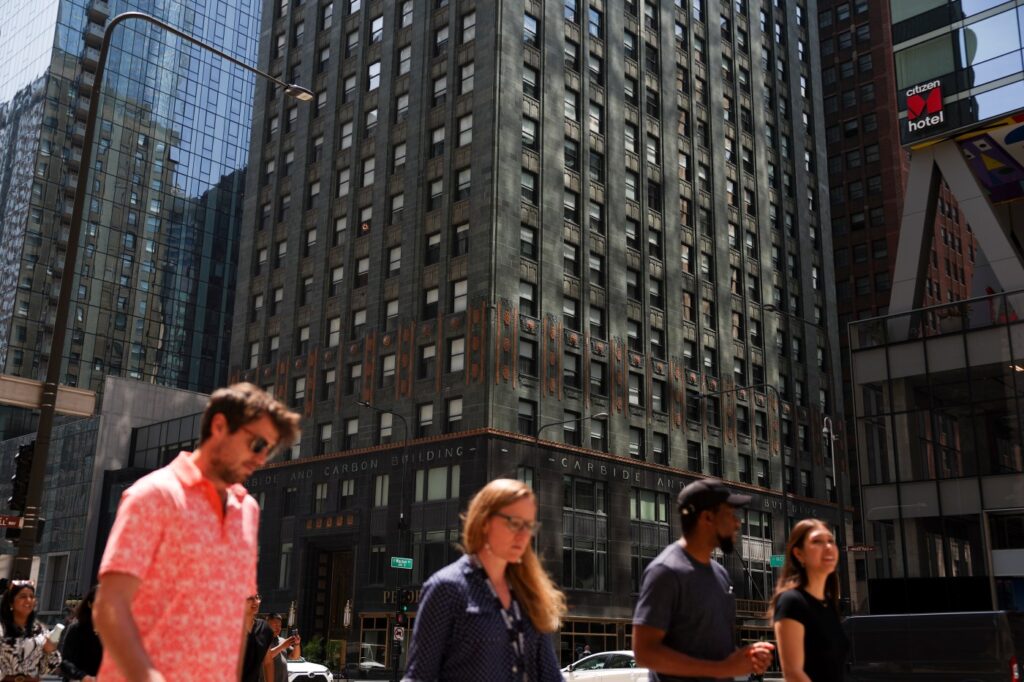
UPDATE: Chicago’s historic buildings are undergoing a dramatic transformation into fashionable hotels, breathing new life into the Windy City’s architectural legacy. This trend, which has gathered momentum over the past few years, highlights the city’s commitment to preserving its rich history while catering to modern travelers.
Architecturally significant structures, many dating back to after the Great Chicago Fire of 1871, are being repurposed into hotels that appeal to both visitors and locals. According to Eleanor Gorski, CEO of the Chicago Architecture Center, these hotels are situated in prime locations, providing tourists easy access to public transportation and local amenities. “For a traveler, those are great places to stay because not only do you get a taste of the city’s historic flavor, but you’re in the heart of the action,” Gorski stated.
Among the notable conversions is the Kimpton Gray Hotel, housed in the former New York Life Insurance Building. This landmark, completed in 1903 and designed by architect William Le Baron Jenney, is now a chic destination featuring a stunning Georgia Gray marble staircase that captivates guests. “The lobby is a rare surviving example of a 19th-century office building lobby in Chicago,” said Amy Leahy, the hotel’s sales and marketing director.
The trend is not just about aesthetics; it also responds to economic opportunities. Thanks to the Class L Property Tax Incentive, which encourages the rehabilitation of historic buildings, developers have been able to invest in renovations that might have otherwise remained unfeasible. “This tax incentive has been crucial for many conversions, allowing developers to bring these buildings back into service,” Gorski explained.
The surge in hotel conversions reflects a broader shift in Chicago’s landscape. As cities adapt to changing economic conditions, older office buildings become less desirable, leading to their repurposing. Gorski emphasized that many structures once sat empty for years, waiting for visionary developers to recognize their potential.
Architect Lori Mukoyama from Gensler highlights the unique charm these hotels offer. “Their unique architectural features — such as grand lobbies, high ceilings, and unexpected elements like old bank vaults — create memorable guest experiences,” Mukoyama noted. This sentiment resonates with travelers who seek out hotels with rich histories and compelling stories.
In recent years, several other historic buildings have been transformed into hotels, including the LondonHouse Chicago, which opened in 2016 in the former London Guarantee & Accident Building, and the Chicago Athletic Association Hotel, a former elite private club now welcoming guests since 2015. Each of these hotels not only preserves the building’s past but also integrates its history into the guest experience.
The environmental impact of repurposing these structures cannot be overstated. Mukoyama pointed out that “retrofitting can cut carbon by improving a building’s energy efficiency,” making these projects not only economically sensible but also environmentally responsible. As cities grapple with climate change, adaptive reuse becomes a viable solution.
With ongoing efforts to revitalize other historic properties, the trend of converting historic buildings into hotels is expected to continue. Recent approvals by the Chicago City Council for adaptive reuse projects signal a commitment to preserving the city’s architectural heritage while fostering economic growth.
The excitement around these transformations is palpable, making Chicago a must-visit destination for travelers seeking unique and historical accommodations. As these hotels open their doors, they invite guests to experience the city’s storied past in a contemporary context, ensuring that the legacy of Chicago’s “Big Shoulders” continues to thrive.
For anyone planning a trip to Chicago, these newly transformed hotels promise not just a place to stay but an immersive journey into the city’s rich history. Be on the lookout for more developments as the city embraces its architectural treasures, turning them into vibrant hubs of hospitality.






